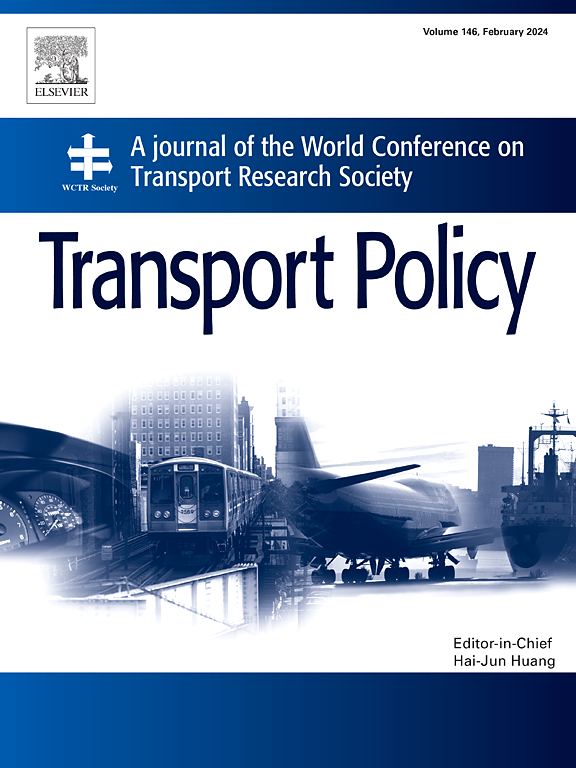Who Gets What? A user perspective on initial credit allocation in Tradable Mobility Credit Schemes
IF 6.3
2区 工程技术
Q1 ECONOMICS
引用次数: 0
Abstract
In Tradable Credit Schemes (TCS), policymakers might align the total quantity of credits in the system with specific climate, air pollution, or traffic reduction goals. To achieve these objectives, the total credits issued are typically set below actual travel demand, thereby encouraging a mode shift from private cars to more sustainable alternatives, as well as promoting trip avoidance or postponement. A central aspect of TCS is, therefore, determining how credits are allocated to individuals—and, specifically, whether all users should receive the same credit budget. However, the literature offers limited research on the strategies, central elements, and user preferences related to the initial credit allocation. In this paper, we review the building blocks of the initial credit allocation in Tradable Mobility Credit Schemes, namely: (a) the eligible receivers, (b) the credit measurement unit, (c) the validity period and transferability of credits, and (d) the allocation method itself. Additionally, we present empirical findings on public support for non-uniform credit allocation strategies and preferences regarding credit compensation for various individual attributes. Our survey results show that approximately 70% of respondents endorse the non-uniform allocation of credits. Support was particularly high among individuals with limited public transport accessibility, lower incomes, and women. Besides, respondents identified mobility impairment, care work responsibilities, and poor public transport accessibility as the most critical factors that should influence the credit budget an individual receives. This paper provides policymakers with an overview of initial credit allocation strategies and practical insights to enhance public acceptance of TCS designs.
谁得到什么?可交易交通信用计划中初始信用分配的用户视角
在可交易信用计划(TCS)中,政策制定者可以将系统中的信用总量与特定的气候、空气污染或交通减少目标相结合。为了实现这些目标,发放的总积分通常低于实际出行需求,从而鼓励从私家车转向更可持续的替代方式,并促进避免或推迟出行。因此,TCS的一个核心方面是确定如何将信用分配给个人,具体来说,是否所有用户都应该获得相同的信用预算。然而,文献提供了有限的研究策略,核心要素,以及用户偏好相关的初始信贷分配。在本文中,我们回顾了可交易流动信用计划中初始信用分配的组成部分,即:(a)合格的接收者,(b)信用计量单位,(c)信用的有效期和可转让性,以及(d)分配方法本身。此外,我们还提出了公众对非统一信贷分配策略的支持和对各种个人属性的信贷补偿偏好的实证研究结果。我们的调查结果显示,大约70%的受访者支持不统一的学分分配。在公共交通不便、收入较低和女性人群中,支持率尤其高。此外,受访者认为行动不便、护理工作责任和公共交通可达性差是影响个人信贷预算的最关键因素。本文为政策制定者概述了初始信贷分配策略,并为提高公众对TCS设计的接受度提供了实践见解。
本文章由计算机程序翻译,如有差异,请以英文原文为准。
求助全文
约1分钟内获得全文
求助全文
来源期刊

Transport Policy
Multiple-
CiteScore
12.10
自引率
10.30%
发文量
282
期刊介绍:
Transport Policy is an international journal aimed at bridging the gap between theory and practice in transport. Its subject areas reflect the concerns of policymakers in government, industry, voluntary organisations and the public at large, providing independent, original and rigorous analysis to understand how policy decisions have been taken, monitor their effects, and suggest how they may be improved. The journal treats the transport sector comprehensively, and in the context of other sectors including energy, housing, industry and planning. All modes are covered: land, sea and air; road and rail; public and private; motorised and non-motorised; passenger and freight.
 求助内容:
求助内容: 应助结果提醒方式:
应助结果提醒方式:


